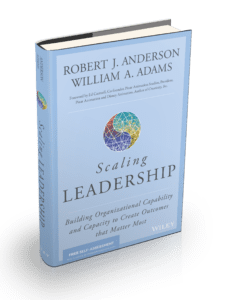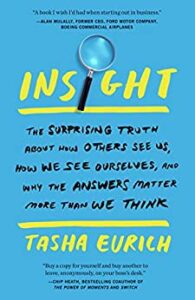Reformulate Your Schedule to Boost Productivity and Get Your Life Back
Productivity is perhaps one of the most sought-after things of the modern day. Our work lives have trespassed upon our personal hours, and time is an incredibly valuable resource. Moreover, mobile phones, email, social media, and the like have created innumerable distractions that make getting work done that much harder. If you’re like me, some days you find yourself delaying the big project until you can get all the little ones out of the way, and before you know it it’s 3 pm and you haven’t accomplished what you needed to get done. Add the afternoon drowsiness that follows and soon you find yourself clearing your calendar for tomorrow in hopes of achieving your project then. It can be a constant cycle, and yet all of us at one point or another fall victim. It isn’t procrastination in its truest sense, but poor prioritization can be just as unproductive.
So how do you spur creative thinking, efficiency, and productivity? An author by the name of Donald Miller has come up with a way to help us boost productivity in our daily lives that I think holds tremendous value. Miller was struggling with similar challenges as named above, and was in dire need of a creative boost to help get his writing career back on track. Lucky for you and me, Miller did the heavy lifting for us, reading countless books on the psychology of productivity and what drives us to accomplish certain tasks. He compiled his findings into a comprehensive Storyline Productivity Schedule that explains the theory and process in full. For the purposes of this post, however, I’m going to lay out what I believe to be his most valuable and applicable points:
1. Do your most important project first. Miller recommends that you attack your most pressing project first thing in the day. Establish a morning ritual, limit the points of contact with others, sit down, set a timer, and get to work. Thus, unless your project requires you to correspond via email, that means that email should not be the first thing you do in your day (though we all find ourselves checking email first!) There are a few advantages in doing so. One, your brain is the most alert and refreshed first thing in the morning, and thus likely to produce some of your best quality work. Two, it limits the possibilities of distractions that can majorly hamper productivity if its earlier in the morning. Three, it reduces the possibility of experiences that threaten to throw us off our rails, like a frustrating conversation with a coworker or a text message that rubs you the wrong way.
2. Number your three biggest projects in order of importance, and separate them from your other to-do’s. I mentioned this briefly in my last post, but let me expand upon this further, as I believe it is truly important. By separating the to-do’s (like responding to an email, picking up dry cleaning, etc.) from your important projects, you limit the possibility that your whole day slips by you without having done anything that is truly pressing and important. That requires, of course, that you dedicate time to your projects before anything else, or work in some to-do’s between projects to give your brain a break before setting a timer and beginning your next project. Miller recommends you limit your number of projects to three, as anything beyond that is likely to result in a shallow level of engagement and a large amount of task switching.
3. Track the time you spend on each project and log it in your calendar/planner. I can’t tell you the number of times that I have sat down and worked diligently on a project, only to not quite finish it and feel this awful lack of accomplishment. I am the guy that loves to finally check the box — the problem is that we can’t always do that for all projects that we work on throughout the day (don’t we wish!). However, what we can do is track the time that we spend (I like to set a timer for at minimum an hour) and log that as we work on each project. Doing so brings two points of value. One, there is still an inherent sense of accomplishment in dedicating time in your day to a project and being able to write that down. Two, by setting a period of time and keeping track, you are more likely to limit distractions and make that time valuable. It’s a win-win, and something that has dramatically changed how I think about my day and the amount of work that I can get done in a sitting.
Believe me when I say that these recommendations have the ability to absolutely change your day – boosting both quality of output as well as minimizing the time spent drudging through projects. If you are curious about more of Miller’s work and the other intricacies of his productivity schedule, I highly encourage you to click the link above and check it out for yourself. He even has templates that you can print for free that will help you structure your day in the way outlined above, plus other features that he cites add value to your level of productivity. At the very least, try the three points I have laid out above and take back those valuable hours of your day!
“Scaling Leadership” by Robert J. Anderson and William A. Adams
 Scaling Leadership is a great read for those in positions of senior leadership who need to transform their organizations and organizational leaders. Scaling Leadership is an essential guide that offers senior leaders the information needed to develop conscious leadership at scale within their organization.
Scaling Leadership is a great read for those in positions of senior leadership who need to transform their organizations and organizational leaders. Scaling Leadership is an essential guide that offers senior leaders the information needed to develop conscious leadership at scale within their organization.
In addition to this bestseller, Bob and Bill published another bestselling book entitled Mastering Leadership. We recommend you read Mastering Leadership first, and follow-up with Leadership at Scale.
We highly recommend this book, and have included this in our leadership development programs.
“Leadership at Scale” by Bob Anderson and Bill Adams
Leadership at Scale is a great read for those in positions of senior leadership who need to transform their organizations and organizational leaders. Leadership at Scale is an essential guide that offers senior leaders the information needed to develop conscious leadership at scale within their organization.
In addition to this bestseller, Bob and Bill published another bestselling book entitled Mastering Leadership. We recommend you read Mastering Leadership first, and follow-up with Leadership at Scale.
We highly recommend this book, and have included this in our leadership development programs.
“The Coaching Habit” by Michael Bungay Stanier

The Coaching Habit by Michael Bungay Stanier is a great book for leaders, managers, and team leaders. It reads quickly, and there are plenty of practice tips and techniques. The book is used in our Coaching for Success workshops and is featured in our Leadership Journey programs. If you had to purchase one book on coaching, we would recommend this be the one.
Don’t forget your top performers. They need feedback too!
Given my curious nature, I asked what made it so refreshing, as that is not typically an adjective that I hearwhenit comes to performance reviews. He responded that the reviewwas overall very good, and that what stuck out was the feedback on his performance that he received during the conversation. His new boss was very specific in what he was doing well, and sited several examples that he had observed over the prior year; and he also identified a couple of areas that, in his opinion, would help this senior leader be more effective. He was again specific on those recommendations, and offered continued support.
My client’s response to his annual review and feedback was what resonated with me. He commented that for 10 years he had gotten used to being left alone and only heard from his previous boss when there was a numbers issue. No feedback, no reviews, and no calls unless something was wrong. He said that he had gotten used to no feedback, and had learned to make up his own feedback!
What surprised him was two things: 1) he didn’t realize how much he missed getting specific feedback; and 2) he thought he didn’t need feedback, when in reality he valued feedback far more than heever thought.
So here’s the takeaway. Never underestimate the positive effects of feedback and how important it is even for your high performers. As leaders, it’s not uncommon to neglect our high performers because we get busy with other issues and rationalize to ourselves that they don’t need feedback and coaching because they’re doing so well.
If you haven’t given feedback to one of your strong performers lately, you know that one who is doing their job and is doing it well…then, reach out now and share some feedback. Theyjust might find your conversation (and feedback) refreshing!
What Every Leader Needs to Know About Coaching
In our coaching workshops, we differentiate between management, feedback, and coaching conversations. It’s important for managers to differentiate between the three types of conversations, and determine when to use the different approaches. To review, management conversations are focused on advising, giving instructions, and directing the conversation to help your team members get specific things done. Feedback conversations focus on past behaviors to help people understand the impact of their behaviors, and what needs to change going forward. Coaching conversations are future-focused, and are used to engage, motivate, and empower people to achieve goals that they care about, and ultimately elevate their capabilities by unleashing their potential.
In my last blog, I mentioned a leader that I’m coaching who received feedback that he was not coaching his people enough, and that his team members wanted more “coaching.” He was taken aback, and couldn’t decipher why they weren’t “feeling the love,” to use his language.
We reviewed what true coaching is, and what he needed to change going forward. During that discussion, we reviewed seven practices that make the biggest difference in one’s ability to coach effectively.
1) Establish the purpose of your meeting right from the start. Clarify that the purpose of the conversation is to advance them, not address issues and problem solve. A useful tool is the How I Want to be Coached form. It’s a great way to set the tone for coaching right from the start.
2) Start the conversation by asking what they want to discuss. Agree to a goal or outcome for the conversation.
3) Ask insightful questions. Use “how” and “what” questions to open the conversation, such as: What are you working on? What are you trying to accomplish? How is your style affecting your effectiveness? Avoid having the conversation migrate to others. Keep it focused on them, and how they can change tomorrow.
4) Challenge beliefs that could be limiting their effectiveness. Challenge your coachee to be more aware of beliefs and assumptions that may be getting in the way of them showing up in a way that they believe will help them.
5) Listen for understanding. Your job is to facilitate the conversation so they can explore options and discover different ways to move forward. If you tend to jump in and problem solve, push your pause button. Ask questions, and listen deeply.
6) Narrow the focus. Once they have identified options to move forward, help them narrow the options. Ask them which of the options resonate most with them. If they have too many options, nothing will get done.
7) Follow-up and support. Marshall Goldsmith and Howard Morgan wrote a great article entitled Leadership is a Contact Sport, and in the article they outlined the importance of follow-up, support, and encouragement. Remember that all it takes is one question, one check-in, to see how things are going.
As we concluded our own coaching conversation, it was obvious that his “coaching” conversations were more about reacting to problems, dealing with people issues, and task management; and not about advancing his team members. He has since responded by implementing 1:1 monthly meetings that are focused on true coaching.
Why Managers Think They’re Coaching When They’re Not!
I recently worked with a leader who received feedback on a 360 that indicated his coaching of his direct reports was negligible. After giving it some thought, he still disagreed with the feedback. When we discussed the feedback, his argument continued to be, “Hey, I meet with my people at least every month, sometimes weekly. So, I don’t understand why they don’t think they’re getting coaching!” This is not an unusual response to this type of feedback, so let’s explore this disconnect…because there is a big disconnect.
My experience, having worked with hundreds of managers, is that it comes down to the quality and type of conversation that they’re having with their team members. Some managers don’t understand what “real coaching” looks like. They believe that meetings focused on project updates, pipeline reports, and operational issues are coaching discussions. They are not. These are management conversations, and should be differentiated from coaching conversations.
Coaching is a practice to develop an individual’s knowledge, skills, and abilities so they can achieve their maximum potential. Coaching is about helping individuals expand their awareness and discover options for moving forward on what they care about. Coaching is grounded in listening, asking questions, and exploring alternatives to create the results the coachee wants. I like the way John Zenger and Kathleen Stinnett in their book titled, The Extraordinary Coach, further define coaching: “Coaching helps individuals discover answers within themselves and helps them feel more personally empowered. The coach is also dedicated to helping to ensure the implementation and long-term follow-through of planned actions.”
The question I had for the leader who received the feedback on his coaching was, are you coaching or are you having a management discussion during your 1:1 meetings? The answer was clear for him. They have been directive management meetings versus true coaching conversations.
What types of conversations are you having with your people? If you’re having discussions on career aspirations, personal goals, self-limiting beliefs, and professional development objectives – you’re operating in the coaching genre. If you’re talking about projects, deadlines, process issues, etc. you’re having management conversations.
Next, I will share seven practices that the best coaches use to engage, empower, and motivate their teams to higher levels of performance.
“Everybody Matters” by Bob Chapman and Raj Sisodia
Wh en it comes to maximizing potential, Bob Chapman and his team at Barry-Wehmiller have mastered this leadership practice.This is the story of how the Barry-Wehmiller company has experienced enormous transformative change with the manufacturing companies that theyacquired by simply applying leadership principles that buildcultures of trust, security,and fulfillment. And the best part of the story is the business results that have resulted from adoption of these core principles and leadership practices. There is a reason why this book is on the Wall Street Journal Bestseller list. Check it out!
en it comes to maximizing potential, Bob Chapman and his team at Barry-Wehmiller have mastered this leadership practice.This is the story of how the Barry-Wehmiller company has experienced enormous transformative change with the manufacturing companies that theyacquired by simply applying leadership principles that buildcultures of trust, security,and fulfillment. And the best part of the story is the business results that have resulted from adoption of these core principles and leadership practices. There is a reason why this book is on the Wall Street Journal Bestseller list. Check it out!
“Insight: The Surprising Truth About How Others See Us” by Tasha Eurich

Tasha Eurich hits another home run bestseller with Insight: The Surprising Truth About How Others See Us, How We See Ourselves, and Why the Answers Matter More than We Think. One of the most striking discoveries in her research was that 95% of us think we’re self-aware, and yet her research indicates only 10-15% are actually truly self-aware. If being self-aware is a meta-skill of the 21st century, then as leaders we need to look at how we increase our self awareness in support of our leadership effectiveness. We think so highly of this book that we’ve integrated Insight into our leadership development programs.
How to Get Your Team to Be More Courageous
During my career, I’ve worked with senior and executive teams to increase the effectiveness of their collective leadership. One of the big skill areas that correlate to whether a team is high performing or not is what we call “Courageous Authenticity.” Put simply, does a team have the capacity to be real with each other; do they share their opinions openly; do they consider other perspectives without judgment; and do they hold the team interests above their own.
Over the past few months I’ve had several teams identify this leadership competency as an area they want to grow and develop so it becomes part of their operating system. So, here are two ways to help your team be more courageous and real with each other.
1) Be confident with your own identity, and share your opinions. When tensions arise, people often feel their identity is being threatened – examples include competence, need to be liked, etc. When threatened, people either get defensive or retreat. It’s impossible to be courageously authentic when you’re in a defensive orientation. I coach my clients to anchor back to the belief that they are entitled to their own opinions, just as others are entitled to their viewpoints. When expressing your opinions or as I say speaking your truth, you’ve got to be confident in your own identity and not worry about what others think. If you fear rejection, you’ll either go into fight mode or retreat. Bottom line, be confident with your own identity, and speak your truth even though it may ruffle some feathers. Advocate for yourself.
2) The second way to be courageously authentic is to understand where others are coming from. There are three behaviors to start practicing as was outlined in Difficult Conversations by Douglas Stone, Bruce Patton, and Sheila Heen: Inquire, Paraphrase, and Acknowledge.
Let’s start with the ability to inquire. By asking solid open-ended questions, without judgment or blame, you can start to understand their story. Asking good insightful questions will mitigate defensiveness. The second practice is paraphrasing. Paraphrasing is about replaying back what you are hearing to ensure you are getting it. Phrasing such as “I’m hearing that you and your team are feeling threatened by this new policy, is that correct?” And lastly, people need acknowledgement to feel valued. They need to know their opinions matter and that they matter. Acknowledging does not mean that you’re agreeing with them, it simply means you understand and are hearing their position. Acknowledgment phrasing sounds like, “I now see where you’re coming from and I understand your concerns.” You have not agreed with them, just acknowledged their viewpoint and/or position.
If team leaders start to practice these two skill areas, their level of courageous authenticity will increase. And as we know from our work with The Leadership Circle, courageous authenticity is one of those power competencies that impact all aspects of a team’s performance.
If you have ideas and suggestions to help teams show up more courageously, post your comments and join the discussion!





